Most people visiting Portugal for the first time are keen to visit Lisbon and Porto, the biggest and second-biggest cities. But driving three hours directly from one to another skips out on coastal gems, medieval walled villages, wine regions, castles, and plenty of culture.
Yes, Lisbon and Porto are two distinct cities with unique architecture, climates, food and history, but the towns and villages in between show you a totally different side of Portugal, and offer up some of the best food around.
Here are some ideas on where to stop when driving a road trip from Lisbon to Porto, or Porto to Lisbon. I suggest rolling up the coast through Nazaré and Aveiro, and coming back via the inland motorway to visit Coimbra and Óbidos. But of course, there’s so much to see so plan wisely.
🚗 Need a rental car? Find the best prices using RentalCars.com or Discover Cars – both sites search and compare car rental companies including international and local rentals to find the best rates.
🚫 🚗 No car? No worries. I’ve noticed some private car transfers have reasonable rates and will turn the drive into a day trip, making two or three stops en route between Lisbon and Porto. Given that the price of the train can be around €50-60 return, if you have a small group it may be worth the investment to turn a travel day into an adventure.
Here’s a decent one for groups of 4-7 people, for groups of 4 from Lisbon, or from Porto – and one for up to 3 from Lisbon or from Porto.
Contents
ToggleWhere to stop on the way
➼ Want someone to shortcut your Portugal research? ➼ Talk to me – I offer 1:1 video calls and can plan your perfect Portugal itinerary. Find out more here.
Read next: Where to stop between Lisbon and Lagos
Óbidos: Medieval walled city
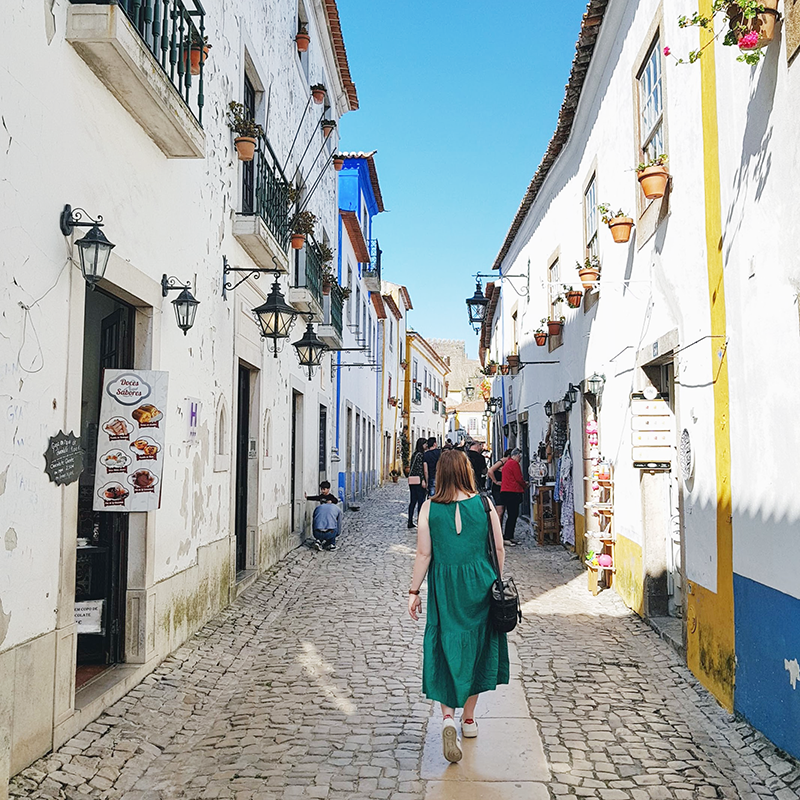
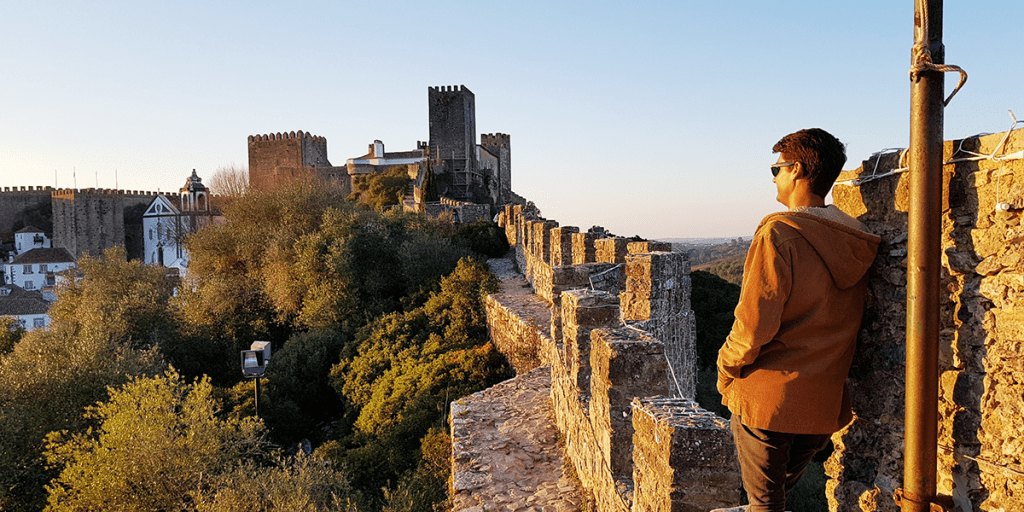
Imagine receiving a small walled city as a wedding gift. Portugal’s King Dinis gave Queen Isabel the little village of Óbidos to mark their wedding back in 1282. This super cute medieval walled city is just over an hour north of Lisbon.
Wander inside the fortified walls and you’ll find a village of typical white-washed buildings with yellow or blue trims. Usually you can also climb the stone walls and cut most of a lap around the town. If you have time, explore deeper with a walking tour that reveals secret spots and medieval tales.
It’s petite and you could easily see Óbidos and move on within an hour, but it is quite popular with visitors. To see the village without the crowds, consider sleeping in the 14th-century castle for your own royal moment. The Pousada Castelo de Obidos is a dream stay! If it’s out of budget, Óbidos has plenty of cute guesthouses.
While in Obidos be sure to taste the local liqueur, ginjinha. It’s one of Portugal’s most famous and you can drink it from a tiny and delicious chocolate cup.
Guided day trip from Lisbon: If you have a few days in Lisbon, Óbidos makes for a good day trip. Take a look at this top-rated guided tour that combines the walled village with the towns of Fátima, Batalha and Nazaré.
Read next: 16 most beautiful villages and small towns in Portugal
Peniche: surfing haven and island paradise
70-minute drive from Lisbon, good to combine with Óbidos
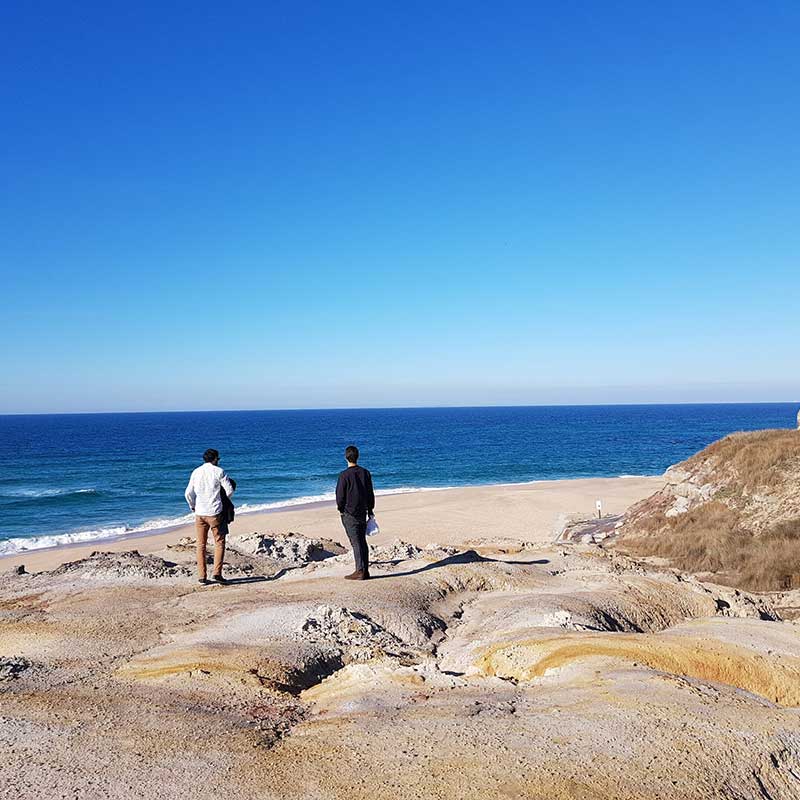

About 70 minutes from Lisbon, Peniche is a coastal town that juts out from the mainland. The road to the old town has beaches with waves on either side, meaning there is almost always somewhere to surf no matter the weather or wind. Ideal for the many surfers who visit Portugal each year.
As you’d expect the town has a strong fishing industry, and I’ve heard many Lisbon chefs will even come here to source the best fish directly from the markets. While here, be sure to enjoy local seafood.
Beyond surfing, which you can book surf lessons or rent gear if you need, the best experience is Berlengas Islands. In summer, catch a boat from Peniche to the small protected islands where you can go diving, swim, kayak and visit an incredible fort. The island is increasingly becoming less of a hidden gem, so I strongly suggest booking a boat in advance or risk missing out. As a nature park, there are caps on the number of people who can visit.
Once on Berlenga Island, you can set off on hikes, join a small boat tour to see the landscape from the water, and swim at the main beach or epic fort. The boat tours mostly act as a ferry service, though some include a scenic boat tour once you reach the island. Be warned, the ride can be very choppy.
Nazaré: home to the world’s biggest waves
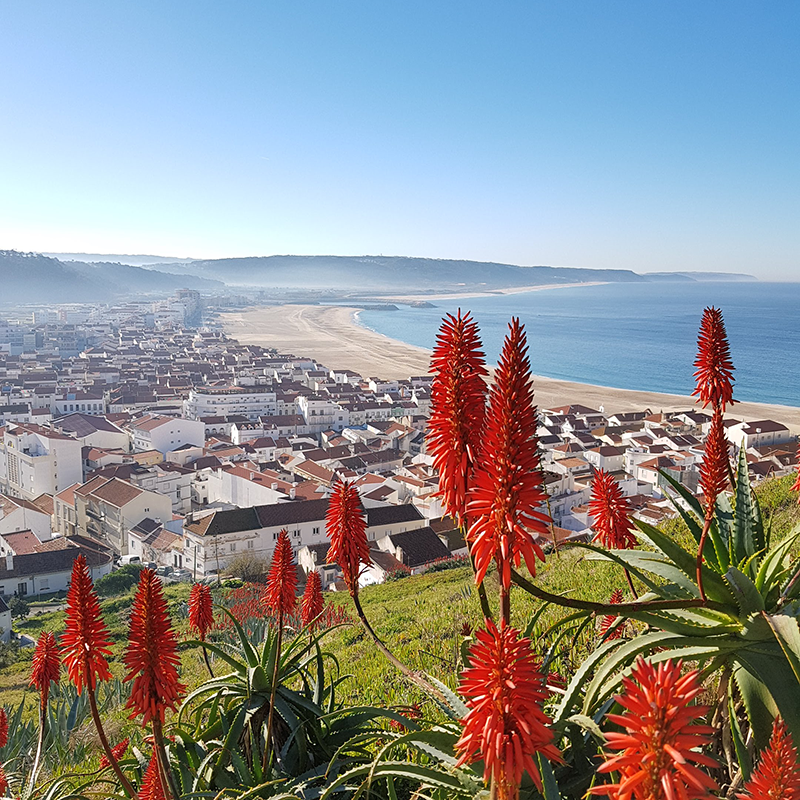
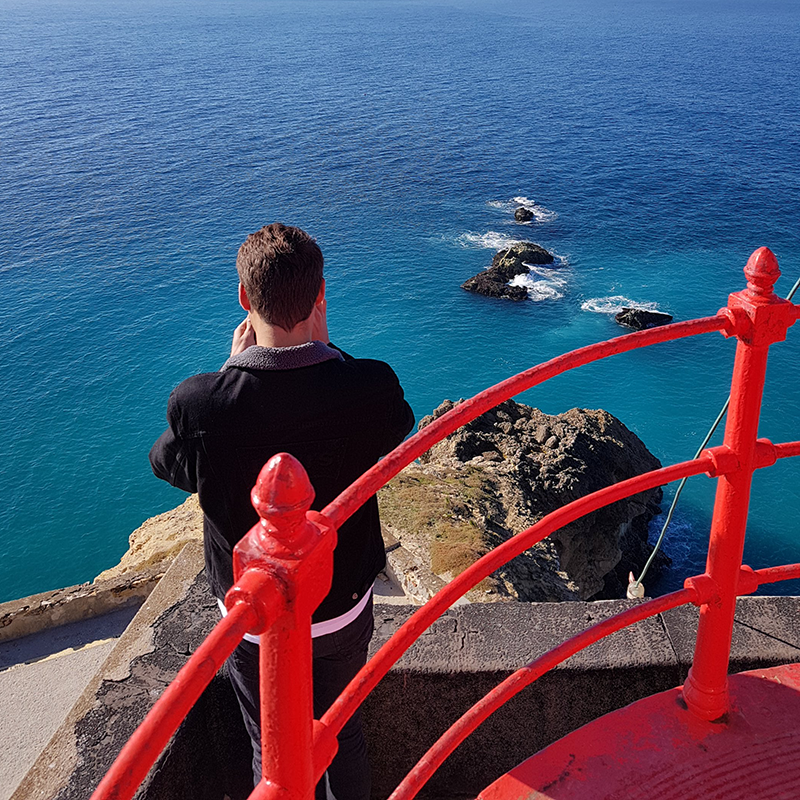
Once famous for its fishing industry, the town of Nazaré is now best known for having some of the biggest waves in the world. Curiously, the Nazaré canyon only pumps at certain times of year and on certain dates, usually in winter. But if the waves aren’t pumping (you need to check the web cam or surf reports) then the town itself is still a worthy spot for a seafood lunch.
White-washed, yellow trimmed houses line the streets and old ladies still wear traditional clothing (seven layers of skirt! High knee bus driver socks! Cute!). There are two parts to the town – the lower main part is beside a huge half-moon beach, or the upper part near the fort. There is a paid funicular tram or free footpath that takes you between them.
In summer, the lower beach fills with striped beach huts and women selling racks of traditional dried fish. At the upper town, a historic fort is a museum filled with surfboards and stories from those who dared to ride the giant waves. If you’re seeking adventure, join a 4×4 Buggy Tour, or hire jet skis or rent e-bikes to explore.
You can join a guided day trip from Lisbon to Nazaré, often passing through Óbidos and Fatima too – like this full-day trip, or this one that includes Batalha too. Or book a private car if you prefer not to drive.
Related blogs: Tile of the day: Nazare’s Ermida da Memória
Coimbra: history at the country’s oldest university
Two-hour drive from Lisbon // 70-minute drive to Porto
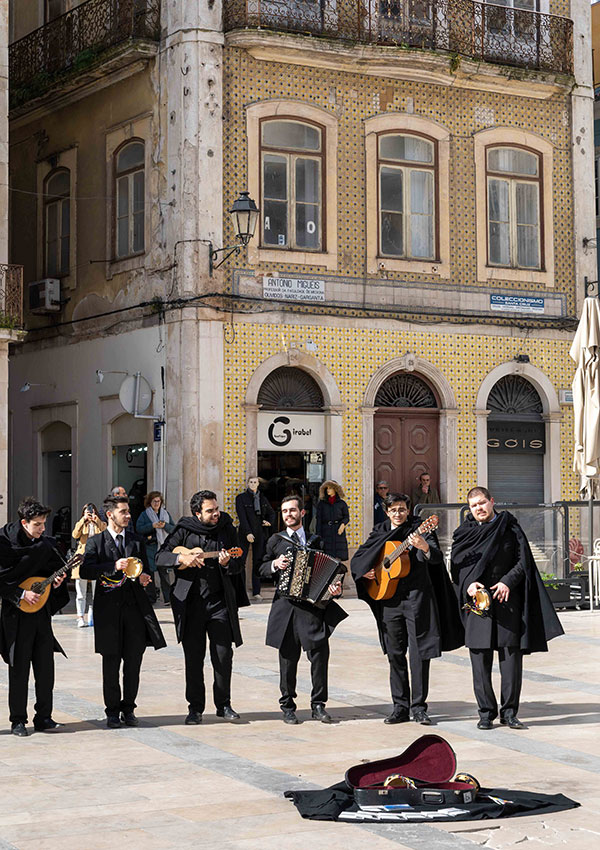
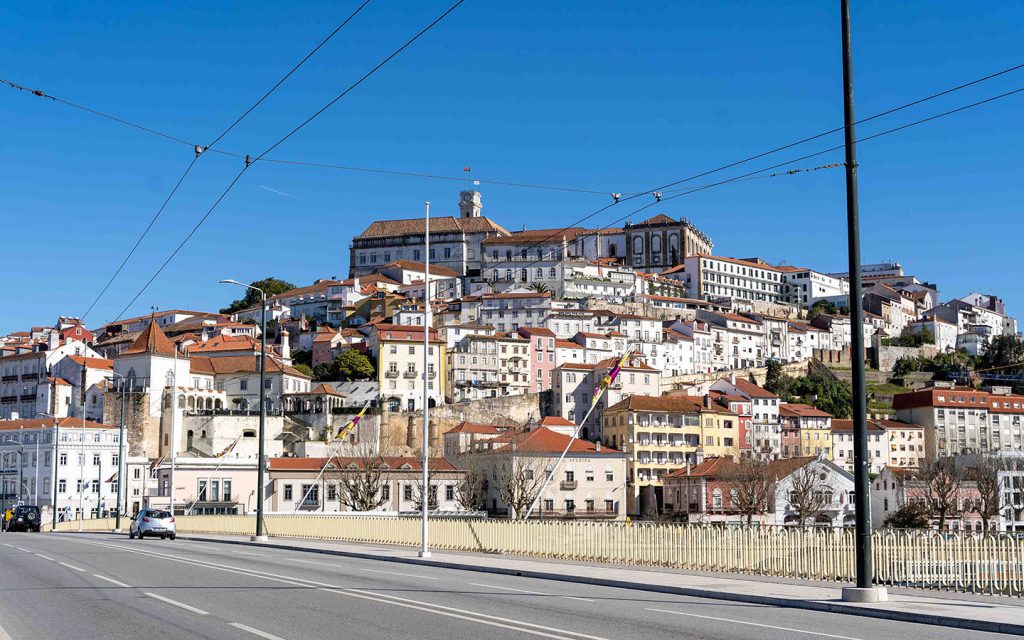
Situated almost perfectly halfway between Lisbon and Porto, Coimbra was once the nation’s capital for over a century, from 1131 to 1255, and continues to flaunt its deep academic roots. The University of Coimbra opened here in 1290, giving this Portuguese city a smart academic vein. Set on a hill in a former royal palace, life revolves around history and students here.
Guided day trip from Porto: While the train does stop in Coimbra and Aveiro on the route between Lisbon and Porto, you might not have time to stop and see both smaller Portuguese cities. Instead you can join a guided day trip from Porto, like this top-rated one.
A lot of people use Coimbra as an overnight stop on the road trip between Lisbon and Porto (and that means you can witness Coimbra-style fado in the evening), but if you’re short on time you could tick off the essentials in a fast-paced afternoon and join a skip-the-line tour of the university.
Find accommodation in Coimbra using the map below. My favourite stay is the historic Hotel Astoria, which has old-world charm without the luxury price tag.
Related blogs: 36 hours in Coimbra // Where to eat in Coimbra
Aveiro: Art nouveau and stripy fisherman houses
2.5-hour drive from Lisbon // 55-minute drive to Porto
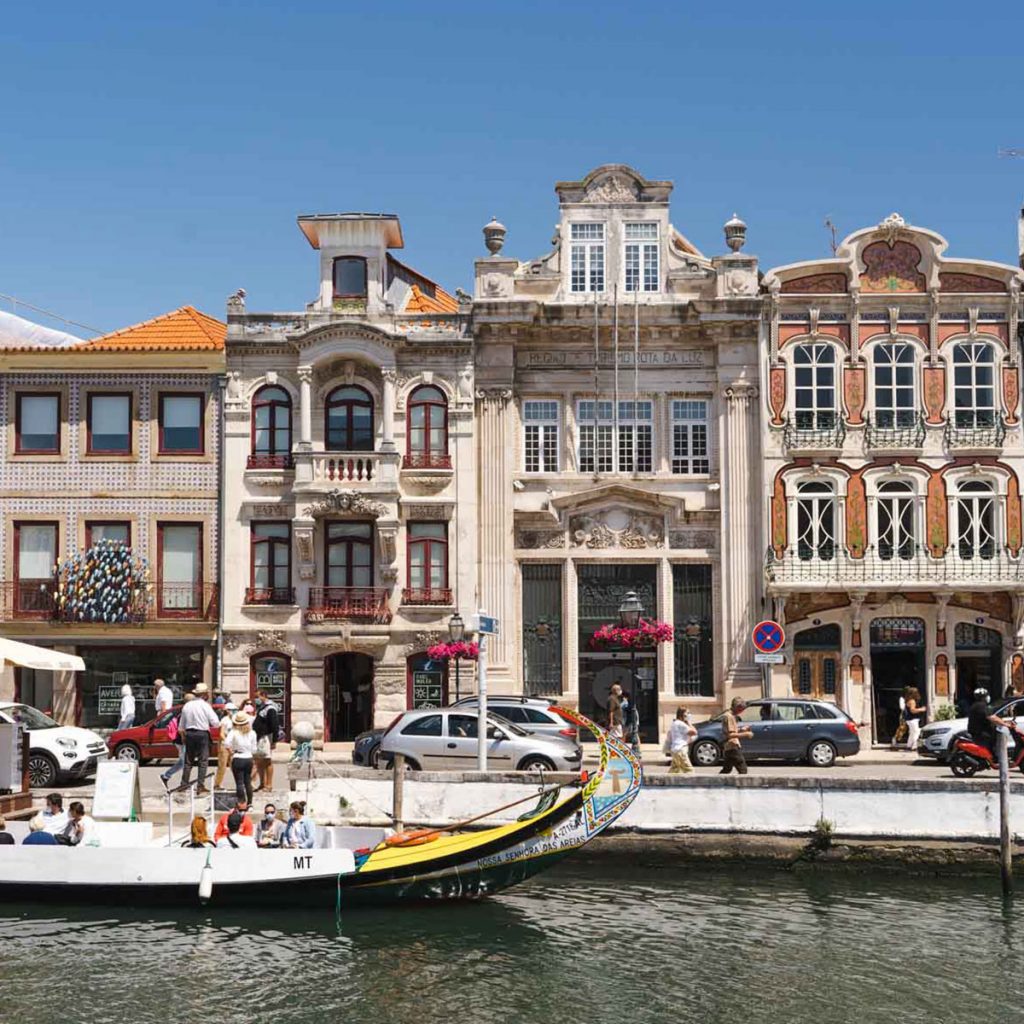
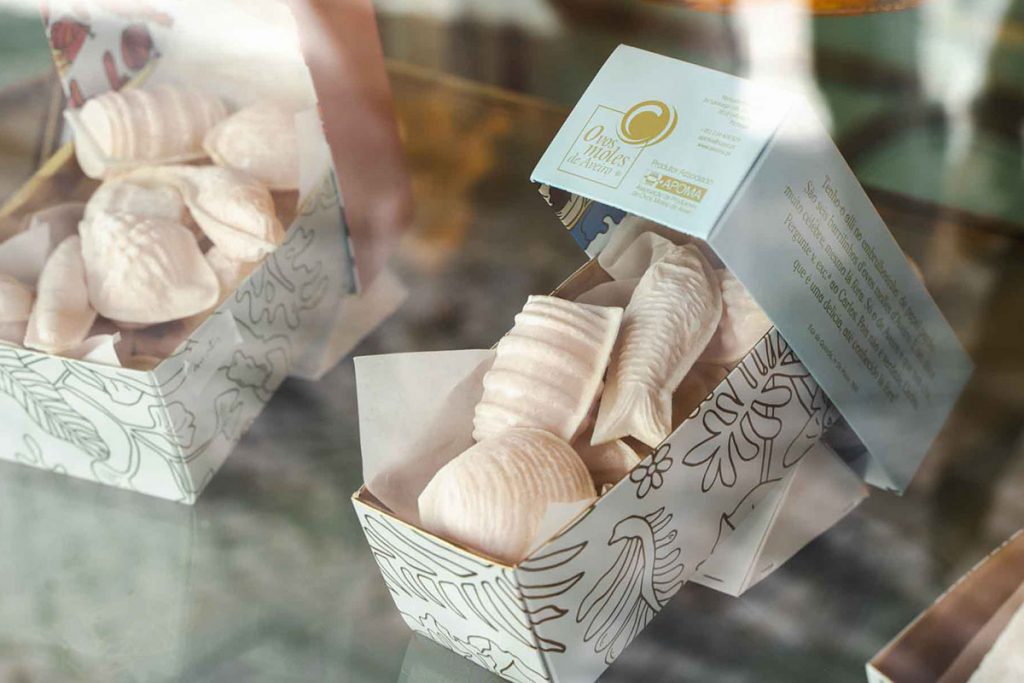
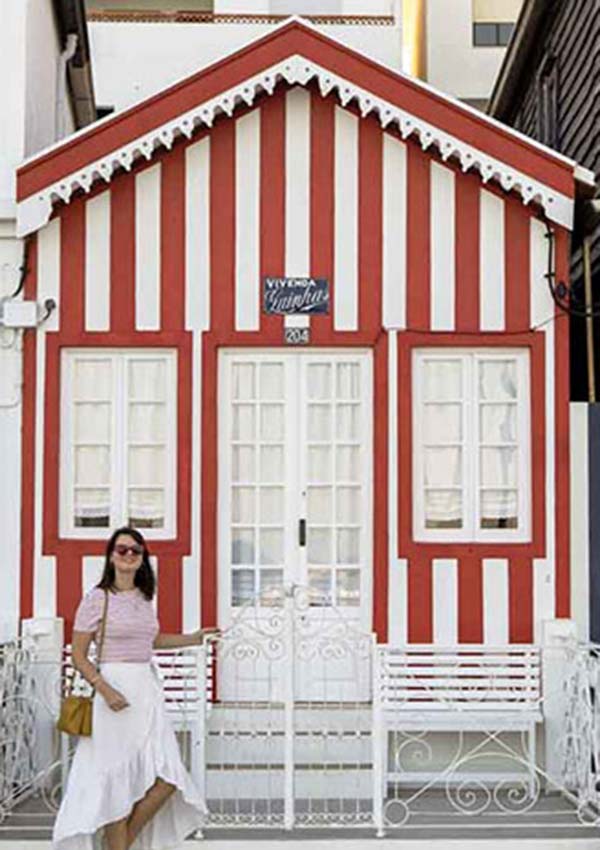
Aveiro has more character than you can poke a stick at. In the centre of the old town, wide canals lined with Art Nouveau houses watch on as colourful moliceiro boats traverse the waterways. While these traditional wooden boats were once used to collect seaweed from the Ria Aveiro lagoon, these days they ferry tourists around the handful of canals that have earnt this city the doubled-edged nickname “Venice of Portugal”.
Don’t come expecting Venice, but do arrive to discover a charming university city with a gorgeous historic centre, beautiful beaches and plenty to do. Wander the historic core on foot, ride in a cute boat, follow an Art Nouveau architecture trail, and try “ovos moles”, a sweet egg custard enclosed in a thin wafer-like shell. My favourite spot for them is Peixinhos.
A short drive away Costa Nova is a must-stop for photos where historic striped fisherman shacks have become a landmark.
Related Blog: 11 best things to do and see in Aveiro
Need a rental car? Find the best prices using RentalCars.com or Discover Cars – both sites search and compare car rental companies including international and local rentals to find the best rates.
Bonus stops between Lisbon and Porto:
If you’ve driven the route between Porto and Lisbon a few times, maybe you’re looking for somewhere new to stop. Here’s a few more off-beat suggestions that go beyond the must-see classic stops between the two big cities.
➼ Want someone to shortcut your Portugal research? ➼ Talk to me – I offer 1:1 video calls and can plan your perfect Portugal itinerary. Find out more here.
Caldas da Rainha: hot springs and ceramics
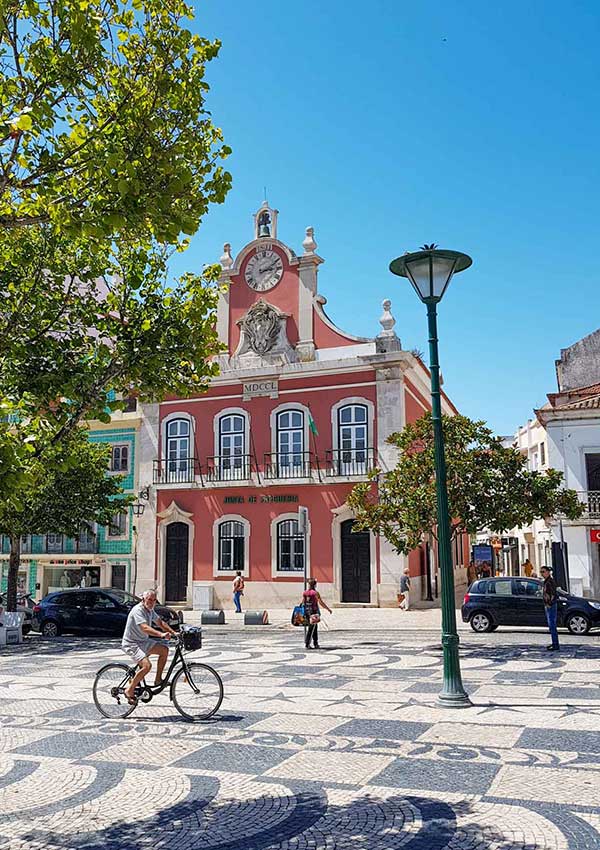

Caldas da Rainha, a small city north of Lisbon, is known for two things: hot springs and ceramics. Sometime in the 15th century, Portugal’s Queen Leonor established a hospital and church here, hence the name, which means “Queen’s hot springs”. By the 19th and 20th centuries spa towns had become all the rage with aristocracy but it didn’t last. Now we’re left with a cute heritage town centre that speaks of former grandeur. It’s also home to Bordallo Pinheiro’s main workshop – and a ceramic factory outlet!
Related blog: 10 things to do and see in Caldas da Rainha
Figueira da Foz: queen of beaches
Two-hour drive from Lisbon // 90-minute drive to Porto
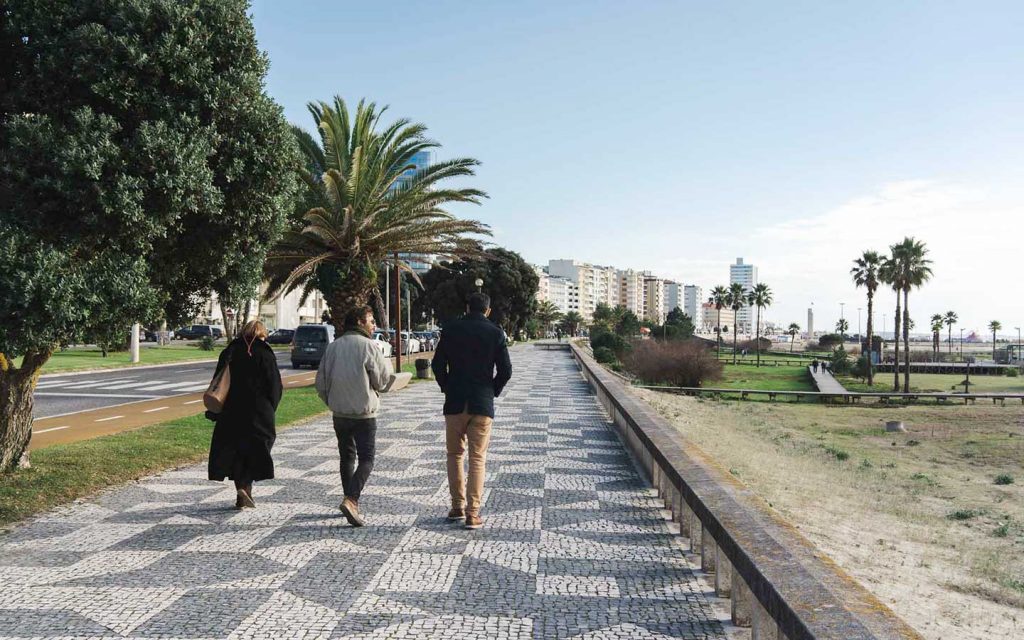
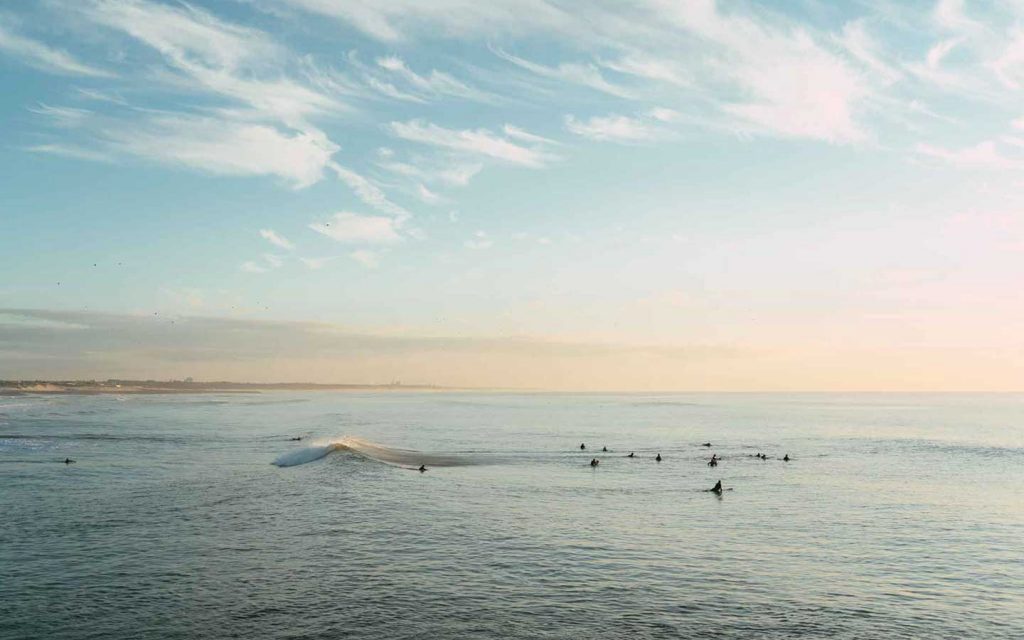
Instead of Coimbra, why not stop at coastal Figueira da Foz. The small city lies where the River Mondego meets the Atlantic Ocean. Nicknamed Rainha das Praias (Queen of Beaches), in the summertime swarms of tourists descend on the wide beaches, and in winter it’s a little quiet.
Related blog: 9 best things to do in Figueira da Foz
Want help planning your trip to Portugal? ✨ I can help plan your dream trip! Book a one-on-one video call and get custom help organising your perfect Portugal itinerary. Find out more about my Portugal travel planning service here.
Braga: Portugal’s third-biggest city marked by religion
Detour: 40-drive north of Porto
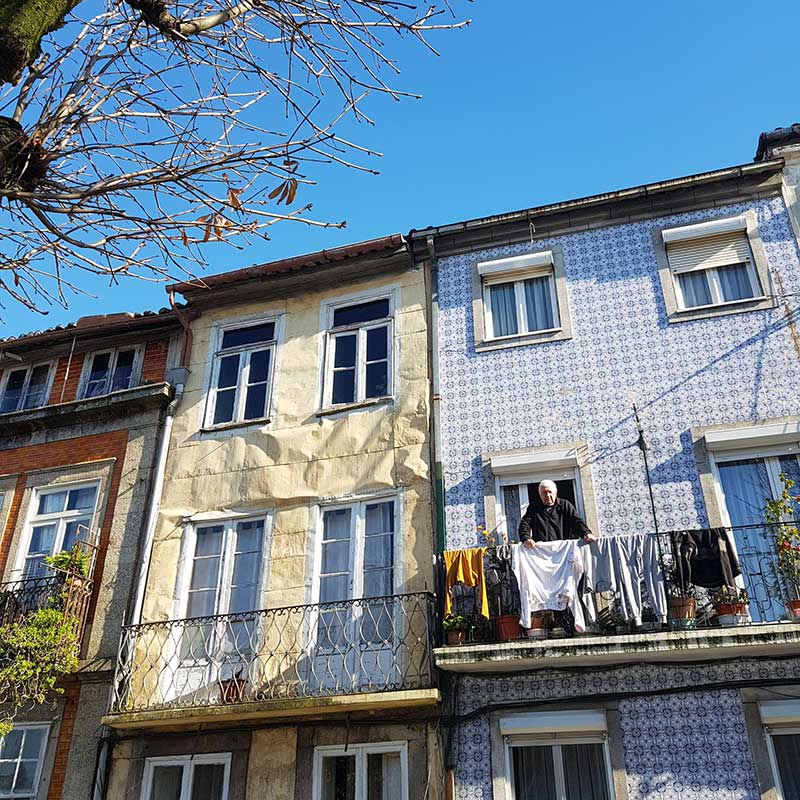
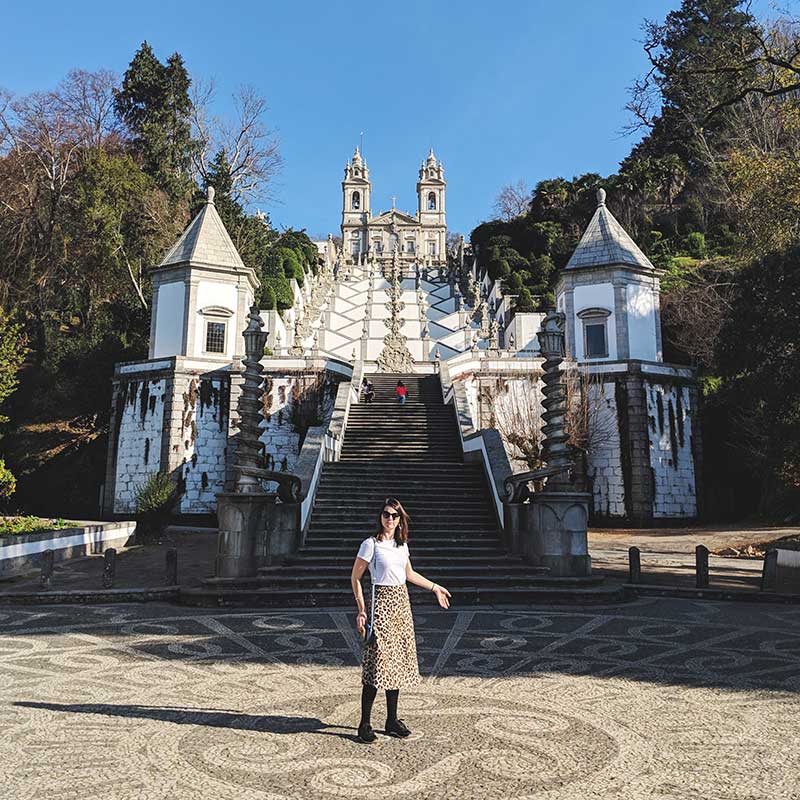
Just 40 minutes north of Porto is the city of Braga. It’s a slight detour but well worth the bonus stop. Braga is super cute, but if you’re feeling city fatigue, aim straight for the Bom Jesus de Braga. This religious monument features a giant staircase topped with a church. From the top the views are incredible, looking back down to Braga and well beyond. Along one side of the stairs is a water-powered funicular that opened in 1882. It’s cheap to ride and avoid walking back up the stairs.
Recently I stayed at a gorgeous guesthouse just outside of Braga called Villa Isobel. Besides the lush beds and infinity pool with views over a verdant valley, Isobel and Len (and their two sweet dogs) were the ultimate hosts. The breakfast is fantastic and Isobel’s latte art would outdo any city barista.
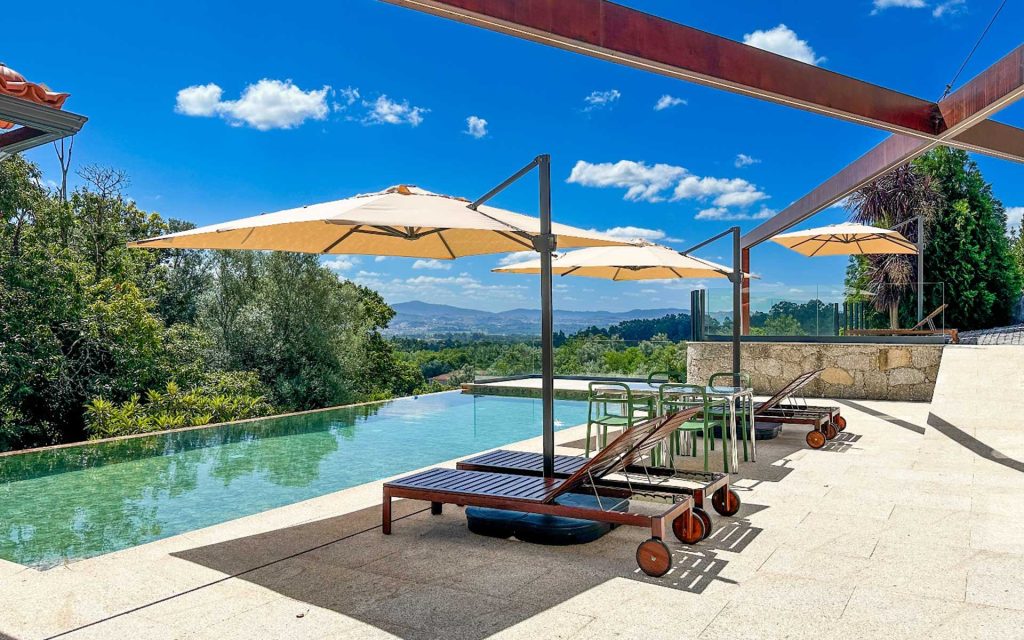
Douro Valley: wine, wine, wine
Inland detour: Two-hour drive east from Porto
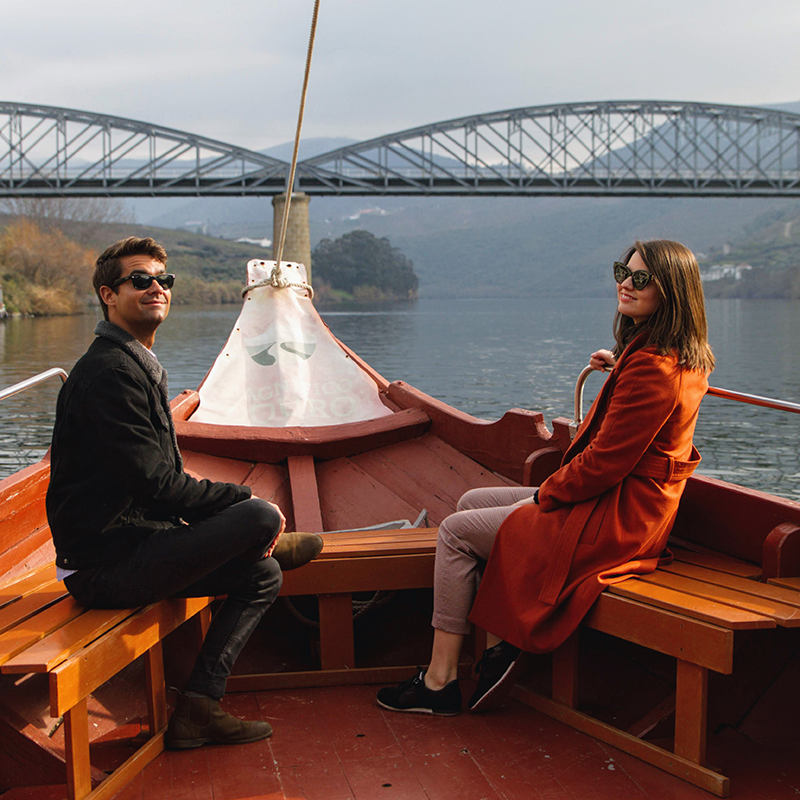
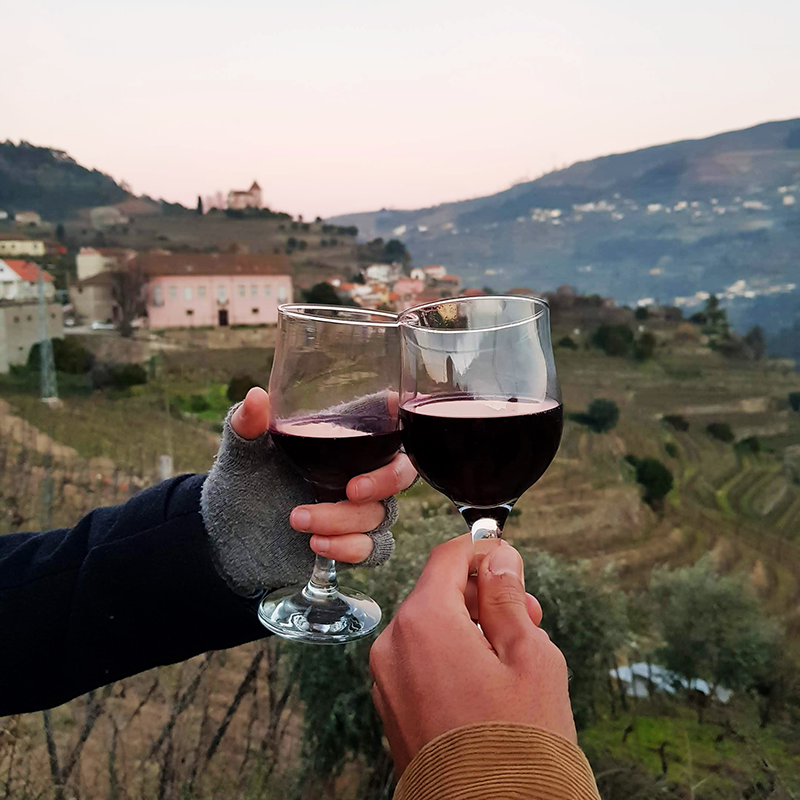
Porto’s famous Port wine is grown on steep hills that fall into the Douro River about two hours drive upstream. The famous export was traditionally loaded onto boats and rafted down the river to Porto where cellar conditions were better suited by the sea. The Douro Valley itself is spectacular and quiet. You can hike around the vineyards on a trail, pop into cellar doors and boat on the river at Pinhão.
If you drive two hours inland, you can take slower inland roads back to Lisbon. Alternatively, there are loads of day trips to the Douro Valley from Porto – you can make someone else drive, while you enjoy the aged fruits of the region. TL;DR – book this top-rated small-group or private winery tour.
Read next… Where to stop between Porto and the Douro Valley
Need a rental car? Find the best prices using RentalCars.com or Discover Cars – both sites search and compare car rental companies including international and local rentals to find the best rates.
No car? No worries. I’ve noticed some private car transfers have reasonable rates and will turn the drive into a day trip, making two or three stops en route between Lisbon and Porto. Given that the price of the train can be around €50-60 return, if you have a small group it may be worth the investment to turn a travel day into an adventure. Here’s a decent one for groups of 4-7 people, for groups of 4 from Lisbon, or from Porto – and one for up to 3 from Lisbon or from Porto.
Did your road trip finally lead you Lisbon or Porto? Keep reading…
- 48 hours in Porto
- 48 hours in Lisbon
- 22 most beautiful castles in Portugal
- 16 most beautiful villages and small towns in Portugal
- Best tiles in Porto: Where to find Porto’s most beautiful azulejos
Find other road trips in Portugal
- Where to stop between Porto and the Douro Valley
- Where to stop between Lisbon and the Douro Valley
- Where to stop between Lisbon and Lagos, Algarve
- Where to stop between Lisbon and Seville
Read next… 10 perfect days in Portugal: A fast-paced itinerary

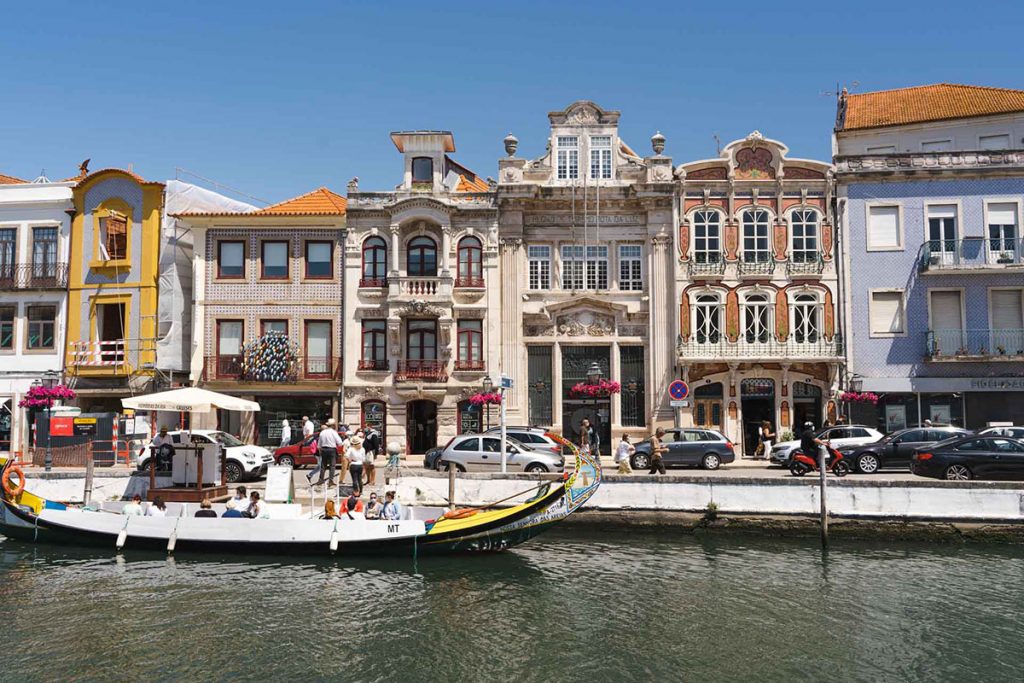
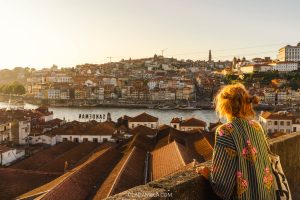

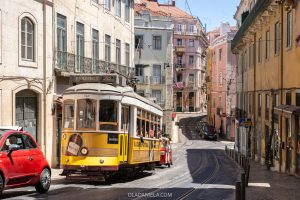







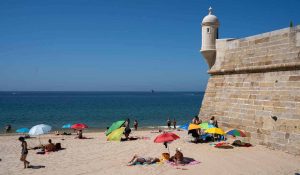
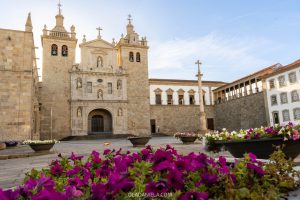
2 Responses
Welldone, Daniela. This is such an insightful and informative post.
I intend to visit Portugal in March of 2025 with my family and one of the itinerary is to take a road trip from Lisbon to Porto. We would greatly appreciate if you could help me with some additional info on the following;
1. Condition of vineyards in Duoro Valley by end of March – worth visiting at that time of year?
2. Would you recommend the road trip (taking advantage of availability of rental car) to include Duoro Valley going into Porto or a separate trip altogether?
3. What are the recommended hotels to stay in both Lisbon and Porto which is conveniently walkable to all places of interest?
Thank you.
Hi Ten, Thank you so much! I’m glad you’ve enjoyed my articles. It sounds like you’ve got a few questions, so I though I should let you know I offer a service where we chat for around 50 minutes and I can answer questions or help plan your itinerary. You can read more about it here: https://oladaniela.com/itinerary-planning/
But to answer what you’ve asked.
1. Not 100% sure as I’ve not been there during that time, but it’ll be post-winter so lush and green grass and likely leaves on the vines reappearing. I can investigate closer
2. I’d make a triangle with Douro Valley. It’s about 90min-2h from Porto, but you could cruise up inland from Lisbon, then west to Porto, then south along the coast to Lisbon again.
3. Hotels is a big question, so I can’t answer it here within 5min. In my consults I can share a map with where to stay/avoid and suggestions based on your budget.
Hope that helps! Thanks so much